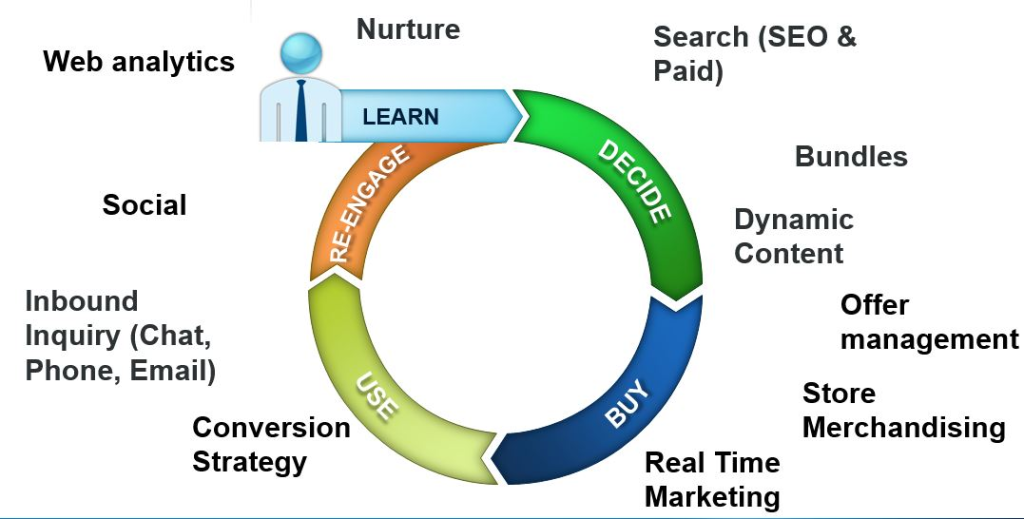
What is Data analytics?

The data analytics is the practice of gathering and analyzing data, from various digital sources, to gain actionable things into a company’s digital marketing strategies. Digital marketing analytics tools can be used to inspire new approaches, minimize churn rate (when customers stop interacting with a company) and increase existing customer value by creating a personalized experience.
And It allows you to gain insights into your audience, track the performance of your campaigns, and make data-driven decisions that can drive better results.
Data analytics plays a crucial role in digital marketing as it helps marketers make data-driven decisions, optimize their campaigns, and measure the performance of their marketing efforts.
Here are some ways data analytics can be used in digital marketing:
- Audience segmentation: Use data analytics to segment your audience based on demographics, behavior, and other characteristics. This allows you to create personalized campaigns that resonate with your target audience.
- Tracking website performance: Analyze website traffic data to understand how users interact with your website. Use this data to optimize your website for better user experience and to drive more conversions.
- Social media analytics: Use social media analytics to understand how your audience engages with your content. This can help you create more effective social media campaigns and content.
- Performance tracking: Use analytics tools to track the performance of your campaigns in real-time. This allows you to make data-driven decisions and adjust your campaigns as needed.
- Attribution modeling: Use data analytics to understand how different channels contribute to your overall marketing performance. This allows you to allocate your budget more effectively and optimize your campaigns for better ROI.
- Predictive analytics: Use predictive analytics to anticipate future trends and behaviors. This can help you create more effective marketing campaigns and stay ahead of your competitors.
How many types of data analytics are there in digital marketing?

In digital marketing, there are many types of data analytics that are commonly used to gather insights and make informed decisions.
- Descriptive Analytics: Descriptive analytics involves analyzing historical data to understand what has happened in the past. It focuses on summarizing and visualizing data to identify patterns, trends, and relationships. Descriptive analytics helps marketers gain a better understanding of customer behavior, campaign performance, website traffic, and other key metrics.
- Diagnostic Analytics: Diagnostic analytics goes beyond descriptive analytics by attempting to explain why certain events or outcomes occurred. It involves digging deeper into the data to uncover the root causes of specific trends or patterns. Diagnostic analytics helps marketers identify factors that contribute to success or failure, such as understanding why a campaign generated high conversion rates or why website traffic declined.
- Predictive Analytics: Predictive analytics uses historical data and statistical modeling techniques to forecast future outcomes. It involves analyzing patterns and trends to make predictions about customer behavior, market trends, and campaign performance. Predictive analytics can help marketers optimize their strategies by anticipating customer needs, identifying potential opportunities, and making data-driven decisions.
- Prescriptive Analytics: Prescriptive analytics takes predictive analytics a step further by providing recommendations on what actions to take based on the predicted outcomes. It combines historical data, predictive models, and optimization algorithms to suggest the best course of action to achieve desired outcomes. Prescriptive analytics helps marketers optimize their campaigns, allocate resources effectively, and make data-informed decisions.
- Real-time Analytics: Real-time analytics focuses on analyzing data as it is generated, providing immediate insights and enabling timely decision-making. It involves monitoring live data streams, such as website traffic, social media interactions, or ad performance, to gain instant visibility into the effectiveness of marketing efforts. Real-time analytics helps marketers respond quickly to changing trends, adjust campaigns in real-time, and seize immediate opportunities.
These are some of the key types of data analytics used in digital marketing.
Use of Data Analytics in Digital Marketing.

Data analytics plays a crucial role in digital marketing by providing valuable insights and enabling marketers to make data-driven decisions.
- Audience Segmentation: Data analytics helps in segmenting audiences based on various factors such as demographics, behavior, interests, and purchasing patterns. By analyzing data, marketers can identify distinct customer segments and tailor their marketing strategies to effectively target each segment with personalized messaging and offers.
- Campaign Optimization: Data analytics allows marketers to measure and analyze the performance of their digital marketing campaigns. It provides insights into key metrics such as click-through rates, conversion rates, engagement rates, and return on investment (ROI). By analyzing campaign data, marketers can identify areas for improvement, optimize their targeting and messaging, and allocate resources more effectively.
- Customer Journey Analysis: Data analytics helps marketers understand the customer journey across multiple touch-points and channels. By analyzing data from different stages of the customer journey, marketers can identify pain points, optimize the user experience, and create more effective marketing strategies to guide customers through the funnel.
- Website Analytics: Data analytics tools, such as Google Analytics, provide detailed information about website performance, visitor behavior, and traffic sources. Marketers can analyze this data to understand which pages or content are most engaging, identify conversion bottlenecks, and optimize website design and navigation to improve user experience and increase conversions.
- Social Media Analytics: Data analytics is used to measure the impact and effectiveness of social media marketing efforts. It helps in tracking engagement metrics, such as likes, shares, comments, and followers, as well as monitoring sentiment and brand mentions. By analyzing social media data, marketers can gauge the success of their social media campaigns, identify popular content, and make data-driven decisions to optimize their social media strategies.
- A/B Testing and Personalization: Data analytics enables marketers to conduct A/B tests to compare the performance of different variations of marketing elements, such as ad copies, landing pages, or email subject lines. By analyzing the results, marketers can identify the most effective versions and make data-informed decisions to improve campaign performance. Additionally, data analytics helps in implementing personalized marketing campaigns by analyzing customer data and delivering personalized content, recommendations, and offers.
- Predictive Analytics: Predictive analytics in digital marketing uses historical data to make predictions about future outcomes. Marketers can leverage predictive analytics to forecast customer behavior, identify high-value customers, predict campaign performance, and allocate resources accordingly.
These are some of the key uses of data analytics in digital marketing.
Best way to use data analytics in digital marketing

Here are the best way to use data analytics in digital marketing
- Set Clear Goals: Clearly define your marketing goals and objectives. Determine what specific insights you are seeking to gain from data analytics. Whether it’s improving campaign performance, increasing conversions, or understanding customer behavior, having clear goals will guide your data analysis efforts.
- Identify Key Metrics: Identify the key performance indicators (KPIs) that align with your marketing goals. These could include metrics like click-through rates, conversion rates, customer acquisition costs, customer lifetime value, and return on investment (ROI). Selecting the right metrics will help you measure and track progress towards your goals.
- Collect Relevant Data: Ensure that you have the necessary data to perform meaningful analysis. Set up data collection mechanisms, such as website analytics tools, social media tracking, and CRM systems, to gather relevant data points. This could include data on customer demographics, behavior, engagement, and conversions.
- Clean and Prepare Data: Clean and organize your data to remove any inconsistencies, errors, or duplicates. Data cleaning ensures that you have accurate and reliable data for analysis. Additionally, transform the data into a format that is suitable for analysis, such as structuring it into a spreadsheet or using data visualization tools.
- Analyze Data: Utilize data analytics techniques to derive insights from the collected data. Apply descriptive, diagnostic, predictive, or prescriptive analytics methods, depending on the nature of your goals and the questions you want to answer. Use statistical analysis, data visualization, and data mining techniques to uncover patterns, correlations, and trends.
- Interpret Insights: Analyze and interpret the insights derived from the data. Identify actionable takeaways that can inform your marketing strategies and tactics. For example, if you discover that a particular ad campaign is generating high conversion rates among a specific demographic, you can allocate more resources to target that audience segment.
- Test and Iterate: Apply the insights gained from data analytics to optimize your marketing efforts. Conduct A/B testing, experiment with different strategies, and track the impact of changes made based on the insights. Continuously monitor and evaluate the results to refine your marketing campaigns and improve performance over time.
- Maintain Data Security and Compliance: Ensure that you handle and store data securely, respecting privacy regulations and data protection laws. Implement appropriate security measures to safeguard customer data and maintain compliance with relevant industry standards.
- Stay Up to Date: Keep abreast of the latest trends, tools, and techniques in data analytics. The field is constantly evolving, and staying updated will help you leverage new methodologies and technologies to gain deeper insights and maintain a competitive edge.
Thanks,






Leave a Reply
You must be logged in to post a comment.